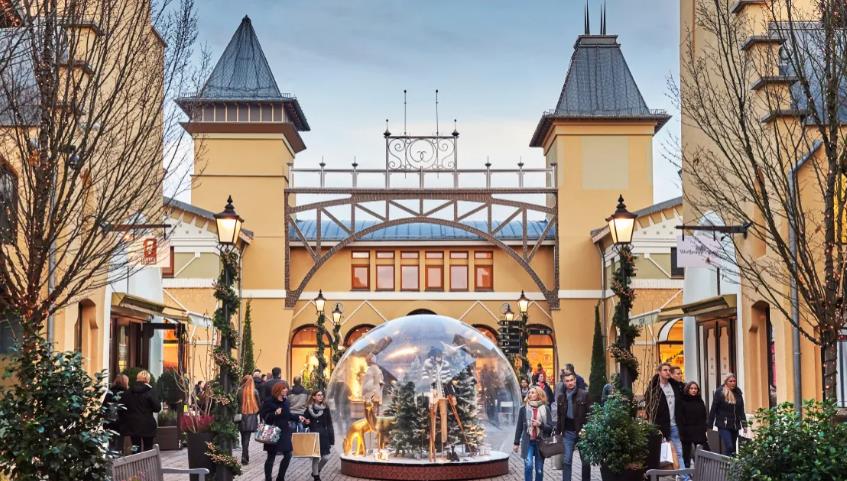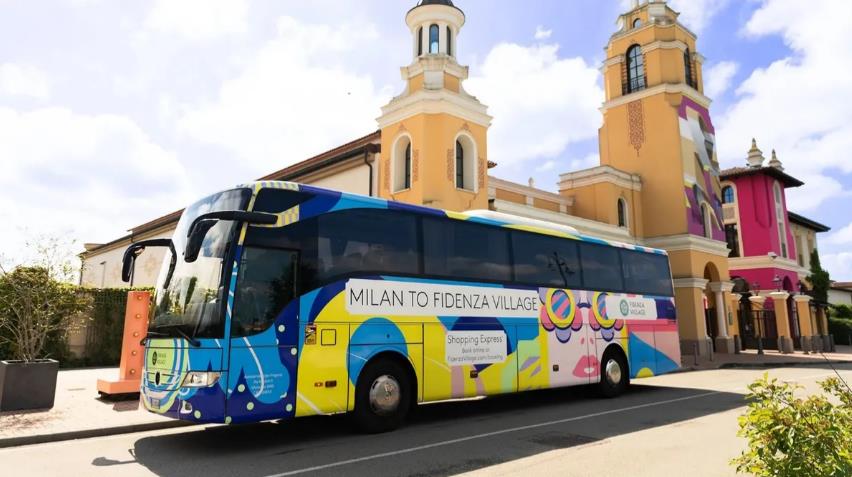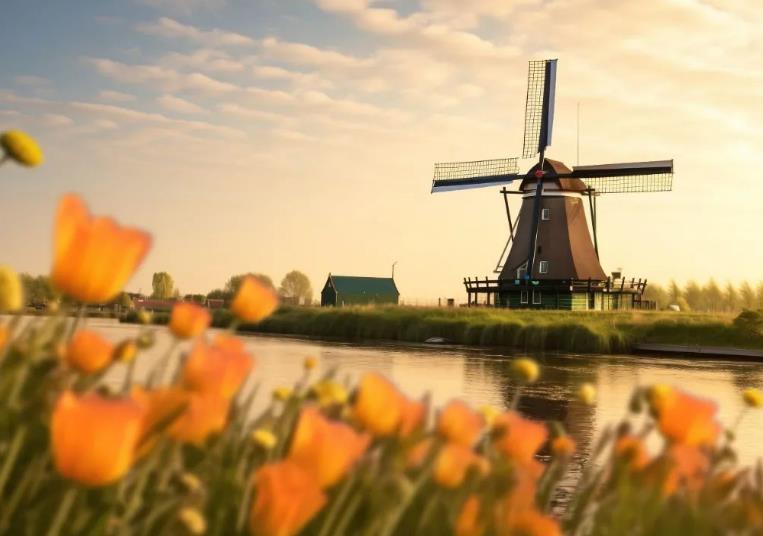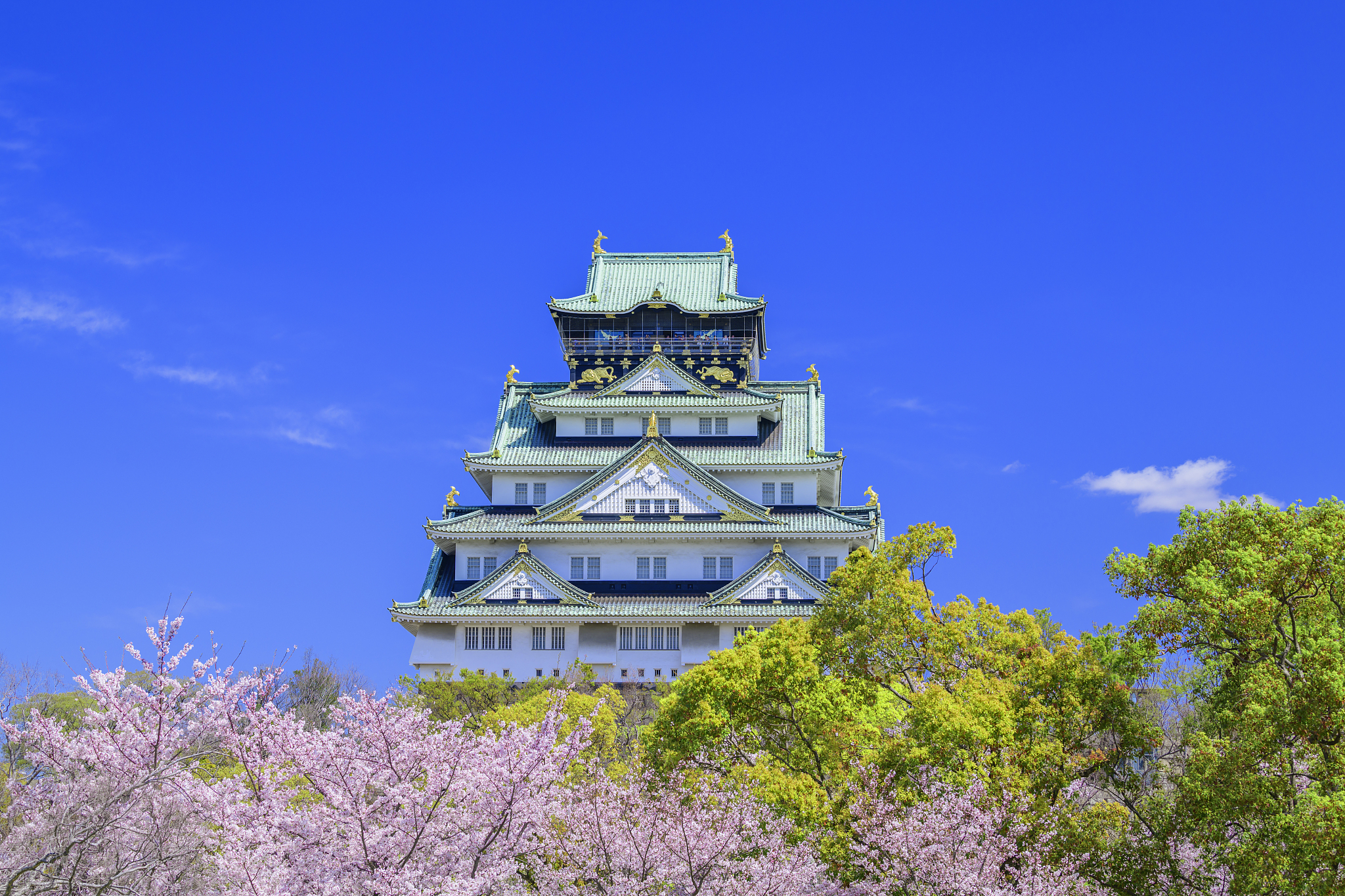https://ae.trip.com/moments/destination-takaoka-56569/
2025 Takaoka Travel Guide: Must-see attractions, popular food, hotels, transportation routes (updated in June)
Takaoka Today's weather
Partly clear 22-30℃

Trending in Takaoka
Popular Attraction in Takaoka
Amaharashi Coast (Noto Peninsula Quasi-National Park)
(51)All Trip Moments about Takaoka
🚂Amaharashi Coast จุดชมวิวเจแปนแอลท์สุดสวย
#Travel to save the world 🚂Amaharashi Coast Amaharashi Coast, a popular viewpoint in Toyama. This is another photo spot of the Japan Alps that we really want to visit. It takes about 1 hour to leave Toyama city. You can see the train running along the beach with the sea and the Japan Alps as a backdrop. The view is so beautiful. Take the Ainozaki Line from Toyama Station and get off at Takaoka Station. Then transfer to the JR Himi Line and get off at Amaharashi Station. At this point, there is a Roadside Rest Area Amaharashi building, which is a parking building. Inside, there are both food and drinks for sale and a balcony for viewing the beach and the trains passing by. If you rent a car, you can park here. 📍Amaharashi Coast, Toyama 🚃Amaharashi Stationหนีนายไป Journey462-Day Toyama Prefecture Itinerary: Capture Stunning Snowy Mountain Views
Hey everyone! Today, I'm sharing an amazing 2-day trip to Toyama Prefecture, focusing on capturing breathtaking snowy mountain views! I happened to visit during a rare stretch of clear winter skies in Toyama. I took the train directly from Kyoto to Toyama Station, kicking off my snow mountain photography adventure. Over the weekend, I managed to photograph the mountains from every angle. 1️⃣ Preparation: Toyama's official website offers Tateyama scenery forecasts and 24-hour live camera feeds. I finalized my trip the day before departure after seeing an 80% and 60% chance of clear views of Tateyama over the weekend. 2️⃣ Iwasehama Area: Take the Toyama Tram directly from JR Toyama Station. Here, you can capture photos of the beach and fishing bridge with the snowy mountains as a backdrop. It's relatively less crowded, allowing you to fully enjoy the scenery and photography. 3️⃣ Glass Art Museum Area: Stunning snow mountain views can be captured from the road in front of the Glass Art Museum. 4️⃣ Toyama City Hall Observation Deck: This is the most recommended viewing spot in Toyama City. You can enjoy a free 360-degree panoramic view of the snow-capped mountains from the observation deck, tens of meters high. It's earned the nickname "Toyama's Premium Viewing Seat." 5️⃣ Fugan Canal Park: Within walking distance from Toyama Station, the canal's connecting bridge features two three-story towers. Here, you can capture the perfect combination of the canal, Starbucks, and the snowy mountains. 6️⃣ Inside Toyama Station: You can also capture unique perspectives of the snowy mountains from within the station. The following are attractions in the Takaoka area, easily accessible by train from Toyama. 7️⃣ Amaharashi Coast: This is arguably one of Toyama's most famous spots. Watching the sunset at Amaharashi allows you to capture the snow-capped mountains bathed in golden light – absolutely stunning! 8️⃣ Manyo Line Tram: I woke up early the next day to catch the first Manyo Line tram from Takaoka. Near Shinminato, I witnessed a beautifully layered sunrise against the backdrop of the snowy mountains – simply breathtaking! 9️⃣ Kaiwomaru Area: From the Shinminato Bridge observation deck, the Coast Guard ship, and the Kaiwomaru, you can witness the sunrise over the snowy mountains. Each location offers unique photo opportunities. 🔟 Himi Area: Himi is just two stops from Amaharashi on the Amaharashi Line. Unlike Amaharashi and Iwasehama, Himi Coast features a long breakwater and offers views of the Shinminato Bridge in the distance, providing excellent photo opportunities. Bonus Hidden Gem: Bell Monta Sightseeing Train Every Sunday, two Bell Monta sightseeing trains run between Himi, Amaharashi, and Takaoka. Compared to the often-dirty windows of regular Himi Line trains, the sightseeing train's windows are cleaner and larger. The driver even makes a special stop midway at Amaharashi for passengers to take photos. Enjoy this experience for just the regular fare plus a 530 yen reserved seat fee.Blissful Benjamin~Carter5933Takaoka Great Buddha, 16 meters tall, made of bronze, one of the three largest Buddha statues in Japan
#MarchGoodPlaces2025 As you leave Takaoka Station and head toward Takaoka Castle, you can see the Takaoka Great Buddha, one of the three largest Buddha statues in Japan, from afar. Takaoka itself is a place with a developed foundry industry, and Takaoka bronze ware is famous throughout the country. Therefore, with the combined efforts of various industries, the rare Amitabha Buddha statue was completed. The bronze Buddha is 16 meters tall and took 26 years to cast. He sits on a lotus seat with his hands in meditation, looking solemn and dignified. You can enter the interior of the Buddha's base and visit it, which houses many paintings and Buddha statues. However, the space is not large, so you can just walk around and come out. #ToyamaTravel #TakaokaCity #TakaokaDafoMoutain5Zuiryuji Temple, the only national treasure-level Zen temple in Toyama Prefecture
#MarchGoodPlaces2025 Zuiganji Temple is the only national treasure temple in Toyama Prefecture, located in Takaoka City. If you want to go to the Ameharu Coast, you must change trains in Takaoka and take a tour of this temple, which represents the ascetic tradition of Japanese Zen Buddhism and the customs and customs of the Edo period. The main gate and mountain gate of Ruilong Temple are tall and majestic, with two majestic and angry Vajra statues standing on both sides of the gate. After crossing the two gates, you will reach the pure land of the temple. There is a statue of Sakyamuni enshrined in the courtyard. The wall reliefs are of different styles, which are mixed and integrated with each other, making the temple particularly magnificent. The ticket price is ¥500. If you want to drink tea in the teahouse, you can buy a combined ticket for ¥900. Chinese maps and explanations are provided. Zuiryuji Temple has an inseparable relationship with the Maeda family, so the family crest decorated with plum petals can be seen everywhere. #ToyamaTravel #TakaokaCity #Zuiryuji TempleMoutain5I thought Kamakura was beautiful enough, until I came to Amaharashi Coast.
I thought Kamakura was beautiful enough, until I came to Amaharashi Coast🎉Attraction Name: Amaharashi Coast ✈Address: Ota, Takaoka City, Toyama Prefecture 🔍Worth seeing 🌈White sandy beaches, green pine forests, and azure seawater. Stroll along the beach, enjoy the gentle sea breeze, and feel the comfort and joy. 🌈The famous general Minamoto no Yoshitsune once sheltered from the rain under a rock on the shore, waiting for the sky to clear. Later generations named the rock Yoshitsune Rock, also known as Amaharashi Rock, in his memory. You can see the rock where he sheltered from the rain. 🌈Trains run along the coastline here. Choose a window seat and enjoy the magnificent view of the Tateyama Mountain Range and Onna Iwa Rock. 🌈Distant mountains, early mornings, sea fog, and sunrise create a breathtaking wonderland. The beautiful scenery of mountains and waters complementing each other is truly unforgettable! 🌈Another must-see is the sunset view from the mountaintop, where you can encounter romantic sunsets. ❤The chance to see the mountain range from the sea is a rare and precious opportunity. The best viewing months are from November to March. Train services are limited, so please check the timetable in advance if you plan to visit. 🌄 Experience: · Visit the seaside on a sunny day and admire the Sea of Japan up close 🍂🌼 · Take stunning photos of Onna Iwa Rock with Mt. Tsurugi in the background 🏞📸 · Explore the Noto Peninsula 🏝🚶♂ 📷「Nearby Attractions」: · Visit the World Heritage villages of Suganuma and Ainokura 📸🏞 · Check in at Kurobe Dam, Japan's highest dam 💧📸 · Visit the 20-meter-high snow wall corridor in Tateyama Kurobe ❄🚶♂ · Climb the Tateyama Mountain Range and visit the crater lake 🌋🏞🚠 🚗 Transportation: · By car 🚗: Get off the highway at Takaoka Interchange and drive for 15 minutes 🛣 · By train 🚆: Take the JR Himi Line to Amaharashi Station and walk for 5 minutes 🚉890Hazel~Cook$54Avoid the crowds in Tokyo and Kyoto|Recommended peaceful and beautiful Toyama
The main reason for traveling to Toyama Prefecture is to avoid the tourist hotspots like Kyoto and Tokyo! Due to the overwhelming number of tourists, their service attitude has shown a noticeable decline. Especially in Kyoto!!! Foreign tourists in Toyama Prefecture are significantly fewer, much less than in Kanazawa, Ishikawa Prefecture next door. In Toyama Prefecture, besides checking in at Takaoka City, the hometown of Doraemon's author, there is a place I recommend again and again. It is the Amaharashi Coast and the train running along the coast. If you are lucky, you can see the distant Tateyama Mountain Range. Unfortunately, I didn't see it this time. Fortunately, I have seen it before when I was lucky. If you really want to see the Tateyama Mountain Range, it is recommended to visit from January to March every year, when you can also see the snow on the mountain range! 🚃Transportation: Take the Himi Line train from JR Takaoka Station, get off at Amaharashi Station, and walk for less than 5 minutes to reach.sophiaphoenix4Toyama Himi Line
Take the Himi Line in Toyama to Amaharashi, where you can see the ocean and the mountains. At the Amaharashi Roadside Station, you can enjoy stylish drinks and ice cream. Enjoy the ocean breeze during your summer vacation.shimbakiki5Toyama Prefecture Takaoka Station Doraemon Square
Takaoka City in Toyama Prefecture is the hometown of manga artist Fujiko F. Fujio, and there is a statue of Doraemon in the square across the road from Takaoka Station. I took a photo with Doraemon and Dorami-chan. If you go by train, the ticket gates at Takaoka Station are on the second floor, so you can either go to the Furushiro Park side, take the escalator down to the first floor, and cross the road to the square, or you can cross the road from the second floor. 1-8 Suehirocho, Takaoka City, Toyama Prefecture Doraemon's Walking Path #Free Spotyu-ka57Roadside Station Ameharashi, Takaoka City, Toyama Prefecture
A roadside station on Amaharashi Coast in Takaoka City, Toyama Prefecture It's a new building with a great view, making it a great photo spot. There's a shop and observation terrace on the second floor, and an observation deck on the third floor. It was very crowded when I went, and you had to wait a while for the parking lot. Amaharashi Roadside Station 24-74 Ota, Takaoka City, Toyama Prefecture #Free Spotyu-ka65[Toyama Prefecture] Amaharashi Station
The station was named "Amahare" because of the rock where Minamoto no Yoshitsune waited for the rain to stop. This place also appears in the music video of Yorushika, a popular singer among young people. There is only a beach nearby and no shops, but there were many tourists, mainly young people. We were blessed with good weather and had a very pleasant time. #2021c #FreeSpotめろんぬ14Amaharashi Beach, Takaoka City, Toyama Prefecture
Amaharashi Beach, a popular spot in Takaoka City, Toyama Prefecture If the weather is good, you can see beautiful scenery. You can get to the beach from the Amaharashi Roadside Station by crossing the railroad crossing. It is an inland sea of Toyama Bay, and if the weather is good, you can get a full view of the Tateyama mountain range. We highly recommend this place when sightseeing in Toyama. #FreeSpotyu-ka16[Toyama Prefecture] Nousaku Gallery
This is a factory and gallery run by the casting company "Nosaku." As soon as you enter, you'll see an exhibition of colorful castings and casting molds. The factory has apparently relocated relatively recently, but the building and interior are very modern. I think it is playing a major role in promoting tourism in the sense that it gets people interested in castings, who are attracted to the stylish and exciting space. The casting wind chimes are hung with construction paper cutouts that give a glimpse of the artist's sense, which makes you feel happy. And the icing on the cake is the stylish cafe attached to the shop. The view is also wonderful, making you feel like it was worth coming. It was like a factory in a #themepark. #2021cめろんぬ24Takaoka Castle Park, Toyama Prefecture
I went to Takaoka Castle Park in Takaoka City, Toyama Prefecture. Because it was autumn foliage season, the parking lot was very crowded and we had to wait. It seems there are multiple parking lots, and the one I went to was small, so it might have been better to park somewhere else. #autumnfoliage #mapleyu-ka20[Toyama Prefecture] Zuiryuji Temple
First visit. All the museums I wanted to visit were closed, so I had to rearrange my itinerary and added this place. I didn't have high expectations, but it turned out to be very good. Especially the Zendo in the fifth photo. I've posted an explanatory photo in the sixth photo, and as it says, it's a room for practicing Zen, and it was my first time seeing such a room. Even an amateur could tell that the air was different from the other rooms, and although the temple was in a quiet area as a whole, this room had an even deeper silence, or rather, a unique atmosphere. I'm amazed at the wisdom of the people of the past, as the walls and ceilings were designed to keep the same brightness throughout the day. This is a place I would definitely recommend visiting. #2021c #Shrine #Temple and Shrineめろんぬ13Observation deck at Takaoka Otogi no Mori Park in Toyama Prefecture
Takaoka Otogi no Mori Park in Takaoka, Toyama Prefecture This is a large park with a mascot statue of a Doraemon character inside, but there is also an observation deck that you can climb for free. There is also an elevator. The Shinkansen overpass is nearby, so if you're lucky, you might even be able to see the Shinkansen passing by. It was raining when I went, but if the weather is good, you can see the distant mountains and the view looks good. Address: 11-29 Otemachi, Takaoka, Toyama Prefecture #Free Spotyu-ka47Takaoka Great Buddha, Takaoka City, Toyama Prefecture
I went to Takaoka City, Toyama Prefecture to see the Takaoka Daibutsu, one of the three biggest Buddha statues in Japan. I was surprised to see it in the middle of town. I went there by car, but we had to go through narrow streets, and there was a free parking lot. Address: 11-29 Otemachi, Takaoka City, Toyama Prefecture #Free Spotyu-ka28Imizu Shrine, Takaoka City, Toyama Prefecture
I went to Imizu Shrine, located in Takaoka Castle Park, which is associated with Maeda Toshinaga, the first lord of the Kaga domain, in Takaoka City, Toyama Prefecture. The shrine is large, and perhaps because it was the autumn foliage season, it was crowded with people. Address: 1-1 Furushiro, Takaoka City, Toyama Prefecture #Shrineyu-ka23Doraemon's Park
In Takaoka, Toyama Prefecture, there are statues of characters from Doraemon. Doraemon, Dorami, Gian, Shizuka, and Suneo. It's a free park, and it was crowded with many families, and Doraemon and his friends were very popular. Location 1342 Sano, Takaoka, Toyama Prefecture Takaoka Otogi no Mori Park #Free Spotyu-ka47Toyama: Tateyama mountain range, sea and railway
●Name Amahara Roadside Station ●Access It is located between Takaoka City and Himi City, so we recommend traveling by car to this roadside station You can also take the JR Himi Line and get off at Amahara Station ●Points This roadside station offers a beautiful view of the Tateyama mountain range over Toyama Bay There are restaurants and cafes that use local ingredients, and a wide variety of local specialties are sold In front of the roadside station is the rock "Yoshitsune Rock" where Minamoto no Yoshitsune waited for the rain to clear on his way to Oshu, which is the origin of the place name "Amahara" Otomo no Yakamochi, a poet of the Manyoshu, also visited this place several times and is famous for composing many poems here The majestic view of the snow-covered Tateyama mountain range and Toyama Bay is wonderful Himi is also famous for its winter yellowtail, but it is also a region with very delicious seafood and you can enjoy the food #Toyama #Seaside scenery #Breathtaking scenery #Breathtaking sceneryMolly35810One of the
One of the most distinctive places in the area is the metal manufacturing industry. Many of the Japanese factory's mold prototypes are from here. You can not only enjoy the close-up of how these original embryos are made, but also try to make one's own unique ones. The metal accompaniment is quite special. At the time of production, it is necessary to wear the specified overalls for safety reasons. The middle part is a little close to the plasticine. The last part is to take out the original grinding tool and pour tin water (melting point 450°). It seems to have no temperature. Tin water, don't touch it, wait for the staff to complete the pouring, put the finished product into cold water, and take it out again, it is still very pleasant.ColdAir.3Zuiryu-ji Temple
Zuiryu-ji Temple is located at 35 Sekimoto-machi, Takaoka City, Toyama Prefecture. It is a Soto Zen Buddhist temple built in the 17th century by Maeda Toshitsune, the son of Maeda Toshinaga, the second lord of the Kaga Domain, to honor his father. The temple is grand in scale, with its main gate, Buddha Hall, and Dharma Hall being representative examples of Zen architecture from the Edo period. In 1997, it was designated as a National Treasure of Japan. The temple is about a 10-minute walk from JR Takaoka Station (South Exit direction). I visited early in the morning and encountered a Japanese tour group, but not many foreign tourists. It is recommended to spend about 2 hours here. 🕰️ Operating Hours: 9:00 AM – 4:30 PM (Last entry at 4:00 PM) 💰 Admission Fee: Adults ¥500Jason906Walking in Takaoka to Find Memories of "Doraemon"
Takaoka is the second largest city in Toyama Prefecture and the hometown of Fujiko F. Fujio, the creator of "Doraemon." Most visitors to Takaoka come to seek memories and traces of Doraemon and Fujiko F. Fujio, and I am no exception. Since I was a child, I have often read Doraemon comics, even sneaking them into my books during class. This caused classmates in the back row to stare at my book, leading to the teacher discovering and confiscating several comic books. I especially loved watching Doraemon anime and movies at home after class with close friends and family using DVDs. These memories, like fragments, gradually pieced together into complete recollections as I visited the Takaoka City Art Museum. Takaoka is only a twenty-minute train ride from Toyama Station. You can also take the Shinkansen from Tokyo Station, which takes about two and a half hours to reach Shin-Takaoka Station, then transfer to the Johana Line for one stop to arrive at Takaoka Station. Alternatively, you can fly from Shanghai Pudong Airport to Toyama Airport in about two hours, then take the airport bus to Toyama Station and transfer to a train to Takaoka. Exiting the north exit of Takaoka Station and walking left for a short distance, you will see the Doraemon Promenade. Next, take one stop on the Himi Line to Etchu-Nakagawa Station. The Takaoka City Art Museum is near the station exit, or you can walk about twenty minutes like I did. Inside, there are original manuscripts and a biography of Fujiko F. Fujio. From Takaoka Station, take one stop on the Johana Line back to Shin-Takaoka Station. Then, from the nearest south exit, turn right and walk straight ahead. You will pass a large farmland and finally reach Takaoka Forest Fairy Tale Park after about a fifteen-minute walk. This park features the places where Doraemon, Nobita, Gian, and Suneo often played at the beginning of the series. The summer sun in Takaoka is very strong with little shade, so be sure to take sun protection measures to avoid sunburn.NoraButler.57A relaxing time at the national treasure, Zuiryuji Temple ✨ A tranquil trip to Toyama and Takaoka
A moment of spiritual cleansing at the national treasure Zuiryuji Temple ✨ A tranquil trip to Toyama and Takaoka The national treasure Zuiryuji Temple in Takaoka City, Toyama Prefecture, is a majestic Zen temple built as the family temple of Maeda Toshinaga, the second lord of the Kaga domain. The Buddhist temple, lecture hall, and mountain gate are designated national treasures, and the architectural beauty of the early Edo period still lives on. When I actually visited, I found that the quiet grounds calmed my mind and made me forget the hustle and bustle of everyday life. As I walked through the corridors, I was moved by the depth of history and the beauty of the architecture...✨ It is also conveniently located, about a 10-minute walk from JR Takaoka Station and about a 15-minute walk from Shin-Takaoka Station. If you are driving, you can arrive in about 10 minutes from Takaoka IC on the Noetsu Expressway 🚗 It is recommended not only for history lovers, but also for couples who want to take a leisurely stroll or those who want to clear their minds alone. What's more, the temple grounds are free to visit! It's perfect for an absolutely free trip 🎉 Please choose Zuiryuji Temple as your next travel destination. It will surely be a memorable experience😊 #Domestic travel ##Absolutely free travel Couple travel #Solo travel #Absolutely free travel #Toyama travel #Zuiryuji Temple #National treasure tour #Historical trip #Relaxing tripくまたにさんThe seasonal colors reflected in the moat 🌸 A relaxing journey through history and nature at Takaoka Castle Park
The colors of the four seasons reflected on the moat🌸 A journey to soothe history and nature at Takaoka Castle Park Takaoka Castle Park, located in the center of Takaoka City, Toyama Prefecture, is a historical park developed on the site of Takaoka Castle, built by Maeda Toshinaga, the second head of the Kaga Maeda clan. The park, with its beautiful moat and earthworks, is filled with about 1,800 cherry trees that bloom in spring, and has been selected as one of Japan's 100 best cherry blossom spots🌸 I visited on a solo trip, but the cherry blossoms reflected on the water and the tranquility of the castle ruins were a relaxing experience. It's also perfect for a leisurely stroll with your partner or a chat on a bench💑 The park also has a zoo, museum, and teahouse, making it a soothing space where history and nature come together in harmony. Entry is free, so it's also recommended as an "absolutely free trip." Why not carve out memories of your quiet trip in this place where you can enjoy the scenery of the four seasons? [Access] 🚉About 10-15 minutes walk from Takaoka Station on the Ainokaze Toyama Railway 🚗About 10-15 minutes by car from Takaoka IC on the Noetsu Expressway 📍Address: 1-1 Furushiro, Takaoka City, Toyama Prefecture 🕒Opening hours: Always open / Sannomaru Chaya is open from 8:00 to 17:00 🎫Admission fee: Free / Parking available (140 cars, free) Domestic travel #Couple travel #Solo travel #Absolutely free travel #Takaoka Furushiro Park #Toyama tourism #Famous cherry blossom spot #Historical walk #Amazing view of the moatくまたにさんA journey to meet "Japan's most handsome man" 🧘♂️ A moment of tranquility at the Takaoka Great Buddha
A trip to meet the "most handsome man in Japan" 🧘♂️ A moment of peace at the Takaoka Great Buddha The Takaoka Great Buddha in Takaoka City, Toyama Prefecture, is a bronze seated statue of Amida Nyorai, about 16 meters tall. The statue, which was completed over 26 years of work, bringing together local copperware techniques, is known as "the most handsome man in Japan" ✨ I visited on a solo trip, and was quietly moved by the eyes of the Great Buddha, which gradually opened as I walked along the approach to the temple. The corridors inside the pedestal are lined with paintings of hell and Buddha, allowing you to spend a relaxing time 🧘♀️ It is also recommended for couples to take a leisurely visit. Strolling around the temple grounds is free, making it perfect for an "absolutely free trip". Why not take a trip to this place, where history and beauty come together in harmony, to calm your mind? [Access] 🚉About 10 minutes walk from Ainokaze Toyama Railway "Takaoka Station" 🚉About 3 minutes walk from Manyo Line "Sakashitacho" tram stop 🚗About 10 minutes by car from Noetsu Expressway "Takaoka IC" 📍Address: 11-29 Otemachi, Takaoka City, Toyama Prefecture 🕒Opening hours: 9:00-17:00 (Pedestal Corridor) / Irregular holidays 🎫Fee: Shino (free worship) / Parking available (free) Domestic travel #Couple travel #Solo travel #Absolutely free travel #Takaoka Great Buddha #Toyama tourism #Three great Buddhas of Japan #Beautiful Buddha #Healing worshipくまたにさんJapan's Cherry Blossom
ClumsyCamzieDon't just know Mount Fuji! Toyama, Japan is the real hidden gem
Folks, skip the crowded tourist spots in Japan—Toyama is an underrated treasure! ⛰️ Tateyama Kurobe Alpine Route: Dubbed the "Japanese Alps," the snow corridor is absolutely breathtaking. May to June is the best time to visit—standing between the towering walls makes you feel tiny as an ant. 🍣 Himi Fishing Port: A seafood lover's paradise! Freshly caught delicacies will blow your mind. Try the king crab—its meat is firm and succulent. 🌊 Amaharashi Coast: Stunning sunsets, colorful seaside houses, and 100% Instagram-worthy views. A leisurely stroll on the beach is pure bliss. 🏯 Takaoka Daibutsu: Japan's third-largest bronze Buddha statue, majestic and solemn. Nearby ancient temples add to the historic charm. Go now before the crowds discover it! #ToyamaJapan #OffTheBeatenPath #JapanTravelLayla_Washington851🌊🚉【Toyama - Roadside Station Amaharashi】
Can you really enjoy this breathtaking view for free? From the train window, you can see the stunning blue sea. "Wow, Toyama is this beautiful," I couldn't help but exclaim. Just ahead lies Roadside Station Amaharashi! This is the only place where you can see the Tateyama Mountain Range across the sea. Under the right conditions, the sparkling sea and snow-capped mountains align like a picturesque painting. From the observation deck on the second floor, as you gaze at this scenery, you might think, "A trip just to come here would be worth it." Inside the facility, there’s a café, a tourist information center, and a gallery showcasing works by local artists. And yet, admission is free—almost unbelievable. This is a scenic spot worth stopping by during your journey. ⸻ 📍 Roadside Station Amaharashi 24-74 Ota, Takaoka City, Toyama Prefecture 🚃 5-minute walk from JR Amaharashi Station (about 20 minutes by train from Ainokaze Toyama Railway Takaoka Station) 🚗 About 30 minutes by car from Hokuriku Expressway Takaoka-kita IC 🕒 Facility hours: 9:00 AM–7:00 PM (Observation space open 24 hours) 💰 Admission: Freeくまたにさん

Popular Takaoka Topics

2025 Recommended Attractions in Takaoka (Updated June)
114 posts

2025 Recommended Guides in Takaoka (Updated June)
79 posts

2025 Recommended Thorough Guides in Takaoka (Updated June)
44 posts

Destinations related to Takaoka

2025 Osaka Travel Guide: Must-see attractions, popular food, hotels, transportation routes (updated in June)
11975 posts

2025 Kyoto Travel Guide: Must-see attractions, popular food, hotels, transportation routes (updated in June)
9053 posts

2025 Toyama Travel Guide: Must-see attractions, popular food, hotels, transportation routes (updated in June)
308 posts
- 1
- 2
- 3
- 4
Post
More Recommendations
Popular Trip Moments
Zuiryu-ji Temple | Walking in Takaoka to Find Memories of "Doraemon" | A relaxing time at the national treasure, Zuiryuji Temple ✨ A tranquil trip to Toyama and Takaoka | The seasonal colors reflected in the moat 🌸 A relaxing journey through history and nature at Takaoka Castle Park | A journey to meet "Japan's most handsome man" 🧘♂️ A moment of tranquility at the Takaoka Great Buddha | Don't just know Mount Fuji! Toyama, Japan is the real hidden gem | 🌊🚉【Toyama - Roadside Station Amaharashi】 | Rainy晴 Coastline, Majestic Sea Views Along the Himi Line | 🌊 I thought Izu was already breathtaking, until I discovered Amaharashi Coast ☀️ | 🚂Amaharashi Coast จุดชมวิวเจแปนแอลท์สุดสวย | Izakaya Takamasa: Takaoka City, Toyama Prefecture | 富山縣高岡市 - 哆啦A夢景點 | [Toyama] Day trip! | [Toyama Prefecture] Iwasakinohana Lighthouse: A hidden gem of a lighthouse offering a panoramic view of Toyama Bay | Takaoka City: Exploring the unpopular Hokuriku city 🗺️✨ | [Takaoka Great Buddha: Takaoka City, Toyama Prefecture] | He is also known as "the most handsome man in Japan" | This is one of only three beaches in the world where you can see 3,000m-high mountains across the sea. | Go to Takaoka City and take the Doraemon Train | [Toyama] Takaoka, a city where history and culture live on | 4-Day Japan Tour: A Super Detailed Guide You Must Save | 8-Day Tour in Japan | Romantic Spring Itinerary | 4-day in-depth tour of Japan 🔥 A big reveal of the tips for WeChat Moments | 8-Day In-Depth Tour of Japan: A Super Detailed Guide Awaits | Toyama, Japan|Missed a word! | 2-Day Toyama Prefecture Itinerary: Capture Stunning Snowy Mountain Views | Toyama: Discover a Hidden Gem in Japan | Who knew Doraemon's hometown was so beautiful? | [Yoshitsune Rock] A mysterious rock where legends live on
Recommended Attractions at Popular Destinations
Attraction near Bangkok | Attraction near Manila | Attraction near Tokyo | Attraction near Taipei | Attraction near Hong Kong | Attraction near Seoul | Attraction near Kuala Lumpur | Attraction near Los Angeles | Attraction near Shanghai | Attraction near New York | Attraction near Shenzhen | Attraction near Osaka | Attraction near Singapore | Attraction near London | Attraction near Guangzhou | Attraction near San Francisco | Attraction near Beijing | Attraction near Macau | Attraction near Bali | Attraction near Jakarta | Attraction near Paris | Attraction near Ho Chi Minh City | Attraction near Istanbul | Attraction near Phuket | Attraction near Chicago | Attraction near Seattle | Attraction near Toronto | Attraction near Orlando | Attraction near Cebu | Attraction near Chiang Mai
Popular Restaurants in Takaoka
CAFE & DINING COO | TOP RESTAURANT FOUR SEASONS | S.r-trois | Ahora Aqui | Makotoya | Izakaya Takamasa | Yoshimune | Ramen Jigen | Hachiban Ramen Tode | Shimizutei | Anshin Gohan | Sankaitei | Shohachi | Towari Soba Noan | Yakiniku No Barns Yotsuya | DOCG | soup curry maruna | Restaurant le Premier | Yasuragian | Tontei | Sushi Kan | Gyosanjin | Merry Smile Cafe | Wakana Sushi | House Roast Coffee and Western Dishes Crown | Wasaiko Kirari | Sushi Izakaya Takazin | Mister Donut Aeon Malltakaoka | Japenese Cafe Jigen | Sushikin
Popular Ranked Lists
Popular Must-Visit Restaurants in George Town | Top 5 Best Things to Do in Altay Prefecture | Popular Best Things to Do in Leye | Popular Must-Visit Restaurants in Koh Samui | Popular Best Things to Do in Kaili | Popular Premium Hotels in Hatay Province | Top 3 Premium Hotels in Vila Real District | Top 3 Premium Hotels in Portalegre District | Popular Must-Visit Restaurants in Athens | Popular Best Things to Do in Tongdao | Top 7 Best Things to Do in Enshi Prefecture | Top 4 Best Things to Do in Mohe | Popular Must-Visit Restaurants in Milan | Popular Must-Visit Restaurants in Langkawi | Popular Must-Visit Restaurants in Singapore | Popular Premium Hotels in Lumbini | Top 19 Premium Hotels in Ankara Province | Popular Premium Hotels in Castelo Branco District | Top 5 Best Things to Do in Kangding | Popular Best Things to Do in Jiamusi | Popular Must-Visit Restaurants in Ho Chi Minh City | Popular Must-Visit Restaurants in Vienna | Top 3 Premium Hotels in Podgorica | Top 4 Premium Hotels in Denizli Province | Top 9 Local Restaurants in Lushan Global Geopark | Popular Must-Visit Restaurants in Songyang | Popular Best Things to Do in Zhijiang | Popular Must-Visit Restaurants in Bruges | Top 6 Premium Hotels in Gaziantep Province | Popular Must-Visit Restaurants in Jeju
Payment Methods
Our Partners
Copyright © 2025 Trip.com Travel Singapore Pte. Ltd. All rights reserved
Site Operator: Trip.com Travel Singapore Pte. Ltd.
Site Operator: Trip.com Travel Singapore Pte. Ltd.